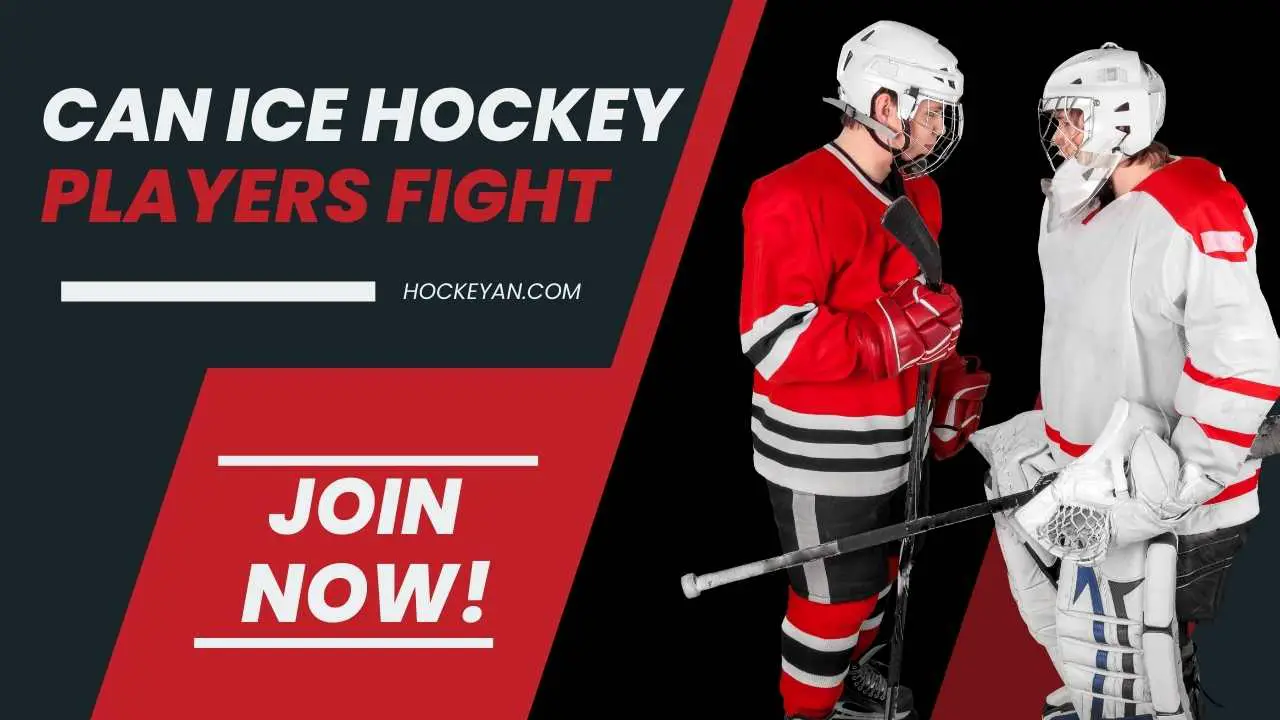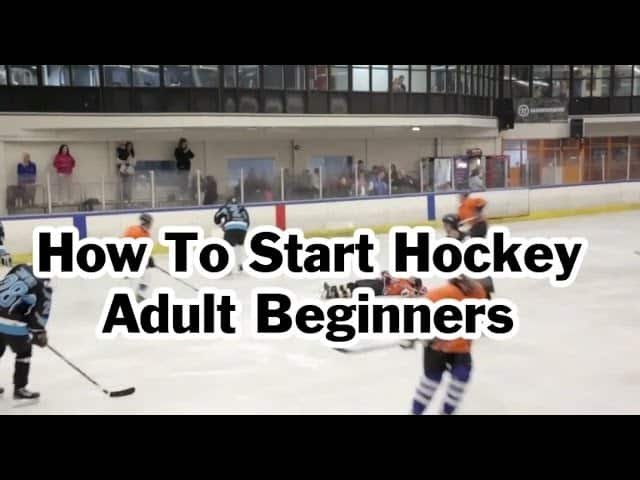Can Ice Hockey Players Fight? Uncover the raw emotion and physicality of ice hockey player fights on our website
Introduction to Can Ice Hockey Players Fight
Ice hockey is renowned for its speed, skill, and physicality. One of the most unique and controversial aspects of this beloved game is the presence of Fighting.
Unlike most sports, where physical altercations are strictly prohibited, ice hockey has a complex relationship with fighting that dates back to its early days. This blog explores the rules, reasons, and controversies surrounding fighting in ice hockey, offering a comprehensive understanding of its role in the sport.
- Technically not allowed, but tolerated: Fighting is against the rules and penalized, but unlike other sports, it’s not an automatic ejection. Players get a five-minute penalty for fighting.
- Decreasing trend: While fighting has been a part of hockey for a long time, there are fewer fights happening in recent years.
- Unofficial purposes: There are reasons players fight, like sticking up for teammates or responding to dirty plays. Some believe it also helps manage tension in the game.
[ez-toc]
The Role of Fighting in the Game: Tradition vs. Safety
The debate around fighting in ice hockey often pits tradition against safety. On one side, proponents argue that Fighting is an essential part of the game that serves to police the players and maintain order on the ice. On the other hand, critics highlight the potential for severe injuries and long-term health consequences, raising concerns about player safety.
Wayne Gretzky, a sports legend, once said, “Fighting has always been part of the game’s fabric, but we need to find a way to protect our players better.” This sentiment captures the heart of the issue—balancing the sport’s traditional elements with the need to safeguard its players.
Credit: Nonstop
Rules and Penalties: What Does the Rulebook Say?
NHL Regulations
In the National Hockey League (NHL), Fighting is controlled but not outright banned. Players who engage in a fight receive a five-minute significant penalty. Repeat offenders or those instigating fights can face additional penalties, fines, and suspensions. The league has taken steps to reduce unnecessary violence, including harsher penalties for hits to the head and stricter enforcement of rules against instigating fights.
Other Professional Leagues
Other professional leagues, such as the American Hockey League (AHL) and European leagues, have their own rules regarding Fighting. While the AHL mirrors the NHL’s approach, European leagues tend to be stricter, often dishing out more severe penalties for fighting to discourage such behavior.
Insights from Players and Coaches
The perspectives of players and coaches offer invaluable insights into the role of fighting in ice hockey. Sidney Crosby, one of the NHL’s most respected players, acknowledges the sport’s physical nature but advocates for balance: “The physicality and intensity of hockey is what sets it apart, but we have to be mindful of the line between entertainment and safety.”
Mike Babcock, a seasoned NHL coach, adds, “Fighting can change the momentum of a game, but it’s not something we should glorify. There are better ways to keep the sport exciting.” These views highlight the evolving mindset within the sport, where the focus is shifting towards skill and strategy rather than brute force.
Psychological and Strategic Aspects of Fighting
Fighting in ice hockey isn’t just about aggression; it’s also a strategic tool. A retired enforcer, Georges Laraque, explains: “Fighting is a strategy. It’s not just about enforcing the rules, but about protecting your teammates and shifting the game’s dynamics.”
Psychologically, fights can serve as a way to intimidate opponents or rally a team that’s losing momentum. However, the long-term effects on players’ mental and physical health can’t be ignored. Brian Burke, a former NHL executive, reflects on this duality: “As a player, you have to weigh the immediate impact of fighting with the long-term effects on your health and career.”
Alternative Solutions to In-Game Violence
As the conversation around fighting in ice hockey continues, alternative solutions to reduce in-game violence are being explored. Enhanced officiating, stricter penalty enforcement, and educational programs focused on sportsmanship and respect are some measures being implemented. Additionally, promoting skill-based play over physical confrontations can help shift the culture of the sport.
Historical Context
Origins of Fighting in Ice Hockey
Fighting in ice hockey can be traced back to the sport’s origins in the 19th century. Early hockey games were often played on outdoor rinks with little supervision, leading to frequent brawls. These fights became an accepted part of the game, contributing to its rugged and intense reputation.
Evolution of Fighting Rules Over Time
As the sport evolved, so did the rules governing Fighting. In the early 20th century, leagues began implementing penalties for fighting to curb excessive violence. However, these penalties were often lenient, allowing Fighting to remain a fixture in the game.
Historical Significance and Notable Incidents
Throughout the years, numerous incidents have highlighted the significance of fighting in hockey. From bench-clearing brawls to infamous rivalries, these events have become legendary tales, cementing Fighting as a part of hockey culture.
Rules and Regulations
NHL Rule 46: Definition and Penalties for Fighting
The National Hockey League (NHL) has specific rules regarding Fighting, outlined in Rule 46. When a fight occurs, players involved receive a significant penalty, resulting in five minutes in the penalty box.
- Instigator Penalty: An additional two-minute minor penalty and ten-minute misconduct are assessed to the player who instigated the fight.
- Game Misconduct: Players identified as the aggressor or third man in a fight may receive a game misconduct penalty, resulting in ejection from the game.
Equipment Regulations
To enhance player safety, the NHL mandates that helmets must remain on during fights. Removing helmets intentionally can result in additional penalties.
Differences in Rules Across Leagues
While Fighting is permitted in the NHL, other leagues have varying regulations. European and collegiate leagues often have stricter rules, with fighting resulting in immediate ejection and suspension.
Reasons for Fighting
Self-Policing and Enforcing “The Code”
One of the primary reasons for fighting in ice hockey is the concept of self-policing. Players adhere to an unwritten rule called “The Code,” which dictates when and why Fighting is acceptable. This system helps maintain respect and order on the ice.
Protecting Star Players and Teammates
Fighting serves as a means to protect star players and teammates from aggressive opponents. Enforcers, players known for their fighting prowess, are often tasked with shielding skilled players from harm.
Retaliation for Perceived Dirty Plays
Retaliation is another common reason for Fighting. Players may engage in fights to address perceived dirty plays or cheap shots by the opposing team, sending a message that such behavior will not be tolerated.
Shifting Game Momentum and Boosting Team Morale
Fighting can also be a strategic move to shift the momentum of a game and boost team morale. A well-timed fight can energize a team, rallying them to improve their performance and potentially alter the course of the game.
Controversies and Debates
Arguments for Allowing Fighting
Tradition and Entertainment Value
Proponents of Fighting argue that it is an integral part of hockey’s tradition and adds to the sport’s entertainment value. Fans often enjoy the added excitement and intensity that fights bring to the game.
Deterrent Against Dirty Play
Fighting is seen as a deterrent against dirty plays and dangerous behavior. The threat of physical retribution can discourage players from engaging in actions that could harm their opponents.
Team Bonding and Morale
Fighting can foster team bonding and morale. It reinforces a sense of camaraderie and unity among players, knowing their teammates are willing to stand up and fight for them.
Arguments Against Fighting
Health Risks (Concussions, Long-Term Injuries)
Critics highlight the significant health risks associated with Fighting, including concussions and long-term injuries. These concerns have grown as awareness of the long-term effects of head trauma has increased.
Negative Influence on Youth and Amateur Leagues
The concern is that fighting in professional hockey sets a negative example for youth and amateur leagues. Young players may emulate the behavior, leading to increased violence and injury at lower levels of the sport.
Glorification of Violence
Some argue that allowing Fighting glorifies violence and detracts from the skills and finesse that make hockey unique. They believe the sport should focus on its athleticism rather than physical altercations.
Current Trends and Future Outlook
Decrease in the Frequency of Fights in Recent Years
In recent years, there has been a noticeable decrease in the frequency of fights in professional hockey. Improved officiating, stricter rules enforcement, and changes in player attitudes have contributed to this decline.
Changes in Public Perception and League Policies
Public perception of fighting in hockey has also shifted. Growing awareness of the health risks and societal attitudes towards violence have led to calls for stricter regulations. Consequently, leagues have implemented policies to reduce Fighting and enhance player safety.
Potential Future of Fighting in Ice Hockey
The future of fighting in ice hockey remains uncertain. Some believe Fighting will continue declining and may eventually be banned altogether. Others argue that it will always have a place in the sport due to its deep-rooted tradition and impact on the game’s dynamics.
Frequently Ask Question
Why do they let ice hockey players fight?
Hockey fighting is a dying tradition, tolerated but penalized. It deters dirty plays and fires up teams, but some argue it’s violent and unnecessary.
Is there a fighter in ice hockey?
There aren’t official “fighters” in hockey, but some players take on an enforcer role, dropping the gloves to answer for dirty plays.
Why don’t they fight in hockey anymore?
Fighting in hockey is still allowed, but penalized. It’s become less common due to stricter rules and a shift towards a faster, more skill-focused game.
Conclusion
Hope your question “Can Ice Hockey Players Fight” has been answered. Fighting in ice hockey is a multifaceted issue with historical significance, complex rules, and passionate debates. While it has been an integral part of the sport for over a century, changing attitudes and concerns about player safety may shape its future. As the sport evolves, it will be essential to balance tradition, entertainment, and players’ well-being. Whether you are a lifelong fan or a newcomer to the sport, understanding the role of fighting in hockey can deepen your appreciation and perspective on this dynamic and thrilling game.
“As a player, you have to weigh the immediate impact of fighting with the long-term effects on your health and career.” – Brian Burke, former NHL executive.




